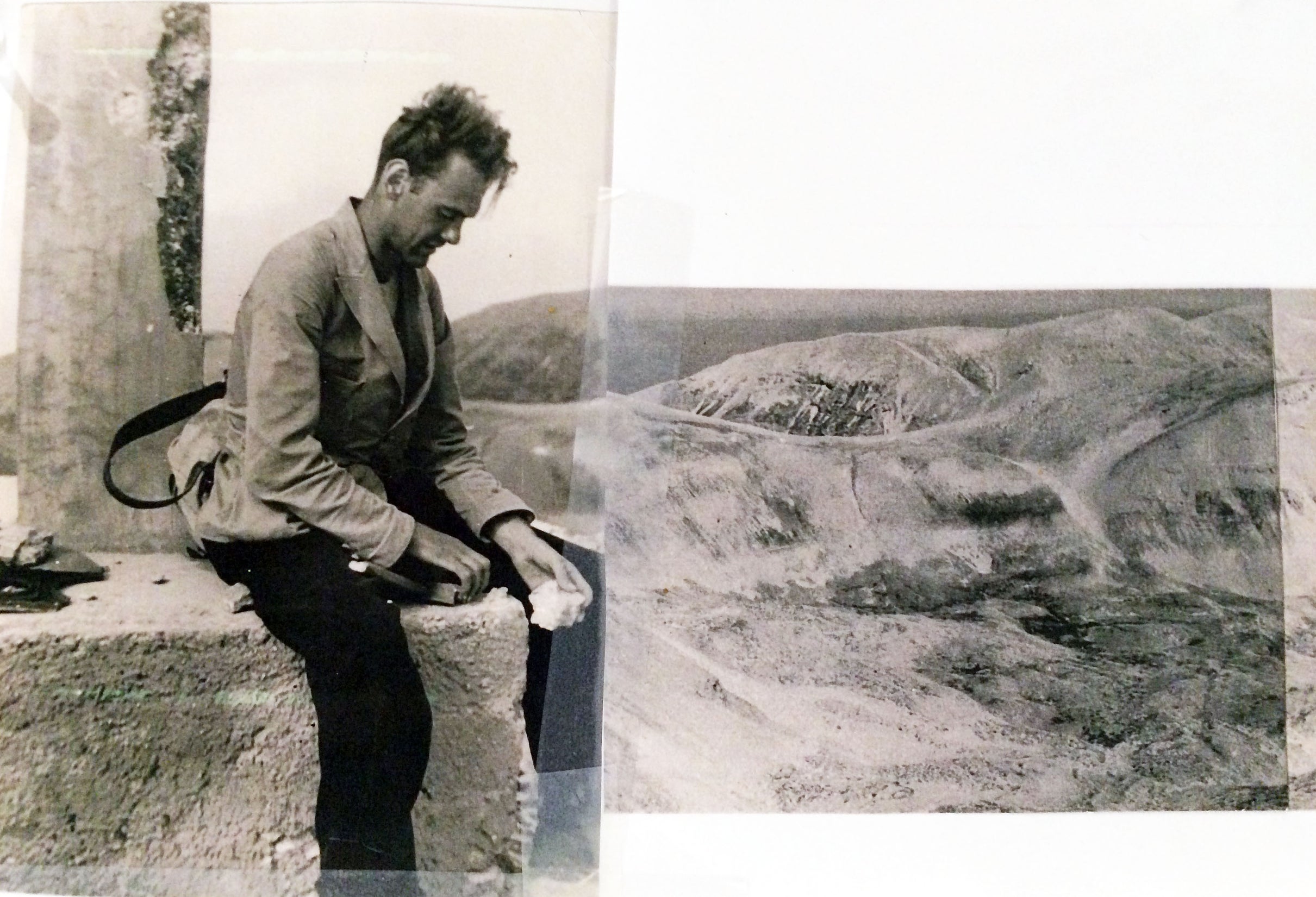Albert Bally, gone four years this July, continues to influence future generations through Rice alumni who honor his research legacy with a special issue of Marine and Petroleum Geology.

“A leading figure in petroleum geology, basin analysis and global tectonics, he was also a great mediator between different scientific cultures and generations, an inspiring teacher, and a generous friend.” -Daniel Bernoulli and Carlo Doglioni, 2021 (Marine and Petroleum Geology, V. 134 and this 2023 special issue).
Bert Bally during his PhD field work, Maiella Massif, Central Apennines, Italy, 1946. Image courtesy of Gabor Tari
Assembled by Bally alumni Gabor Tari (PhD, 1994) and Joan Flinch (PhD, 1993) with co-editors James Granath and Juan I. Soto (visiting Professor at Rice in the 1990's), the special issue of Marine and Petroleum Geology is dedicated to a career that integrates geology and geophysics, described as the “fusion of regional geology, both surface and subsurface, with the application of reflection seismic data and structural restoration to better understand orogens and basins.”
The collection of 14 papers highlights many of the concepts Bally is credited with pioneering (modified excerpt from Tari, G. et al. (2023):
“His work in the Canadian Rockies established the modern view of a thrust-fold belt constrained by seismic data interpretation and structural balancing. The recognition of regional detachments led him to formulate the orogenic float concept which can be applied to most thrust-fold belts. He also recognized the presence of detached normal faults- described as listric faults- in the internal parts of folded belt, and recognized that they are quite common on continental margins as well. His work at Shell exposed him to the Gulf of Mexico region where he coined the term salt roller for a certain type of salt-related structures. The first generalized description of structural inversion was offered by Bert. He also defined a global basin classification scheme and introduced the concept of foredeep unconformities.”
A three-year effort by alumni and colleagues from academia and industry, these contributions build on Bally’s lifelong study of the regional geology of fold and thrust belts, and basins, using reflection seismic data. Global in scope, the articles look at classic locations ranging from Bally’s original graduate research in the Italian Apennines, to his tenure at Shell working in the Canadian Rockies to the Gulf of Mexico. Even Bally’s 1966 landmark paper "Structure, seismic data, and orogenic evolution of southern Canadian Rocky Mountains" which the editors argue exemplifies “the power of seismic data and value of structural restoration of thrust-fold belts [as] a key to their proper understanding,” provides the foundation for a modern regional structural interpretation the Eastern Carpathians of Romania.
On the reasons for undertaking the effort to put the special volume together, Tari responded, “All the "Bally's students", as we became known in parts of the industry, share the same sentiment, i.e. we never had and never will have an educator of his caliber, somebody who made us think in such a special way about seismic data and how to look at it properly.”
Bert Bally was an undisputedly brilliant and prolific geologist, respected and appreciated throughout the geologic community and petroleum industry. EEPS captured Bert’s honors, biography, and the recollections of former students, colleagues and friends in a booklet which can be accessed HERE.
